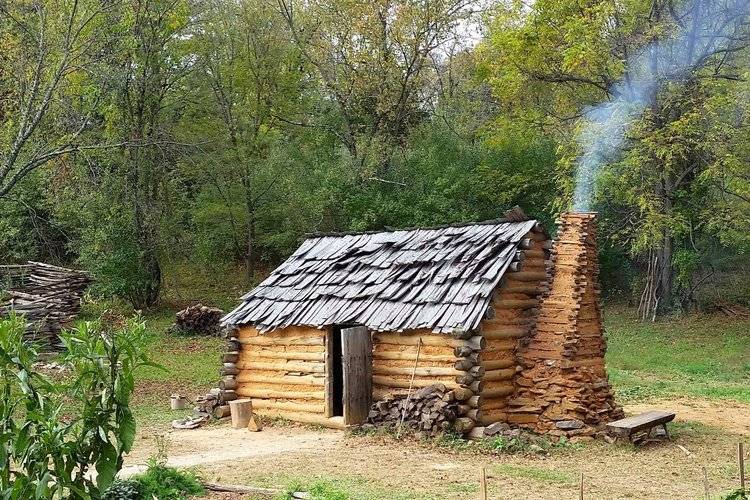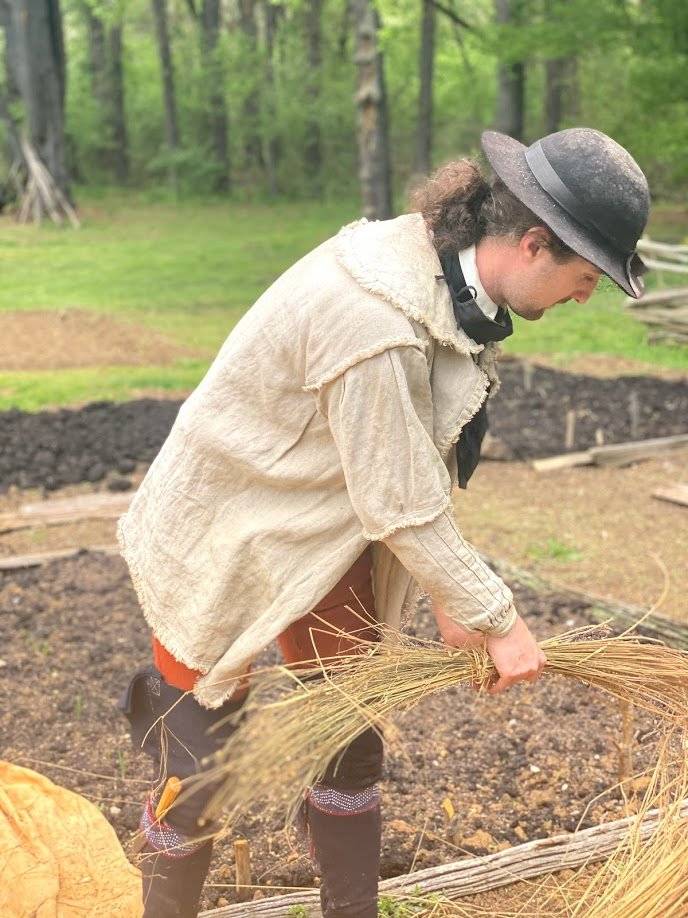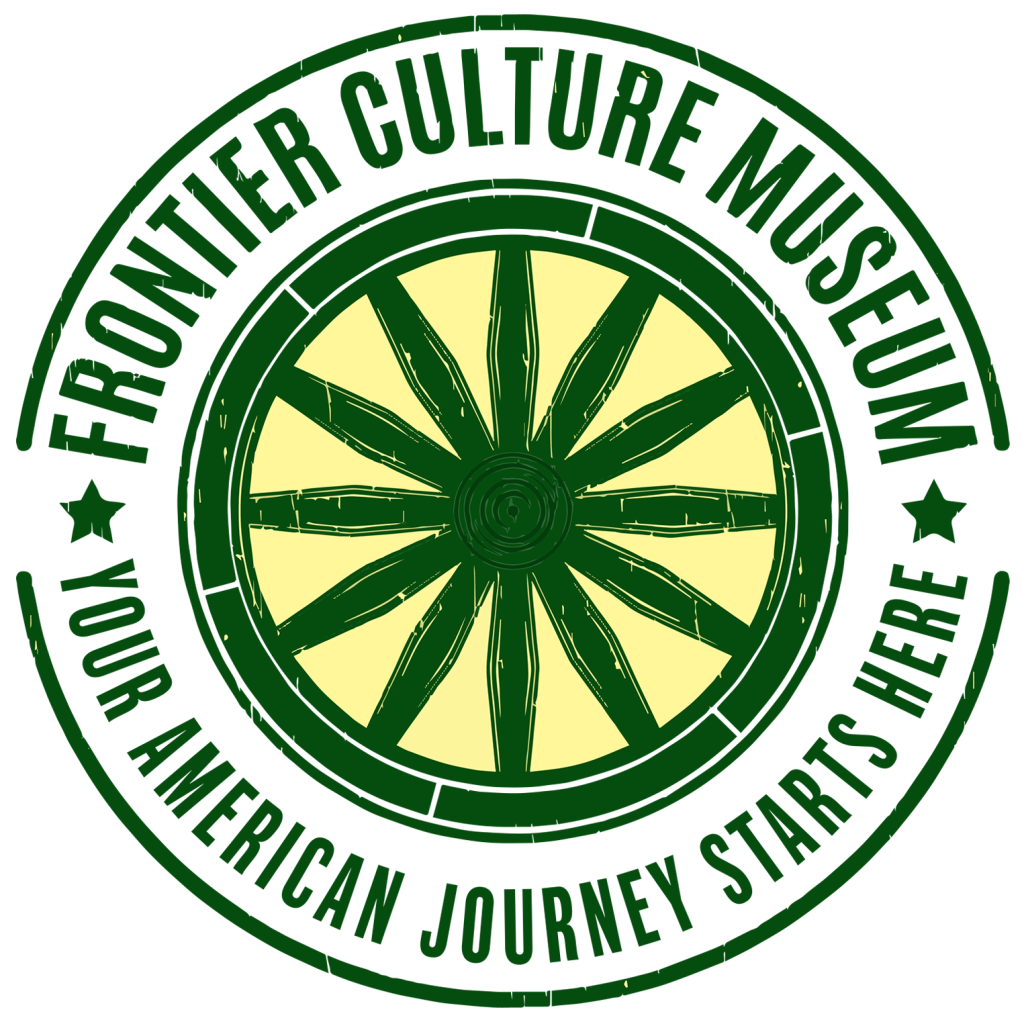Lecture Series
Valley of Virginia, 1760s

Settlement of America’s Appalachian river valleys began in the late 1720s, and the early settlers typically built one-room log cabins like the reconstructed building at the Museum.
Virginia’s land policy attracted diverse groups of Old-World settlers to its western frontier, often referred to as the “backcountry.” Like the rest of the American continents, this area was and is the ancestral home of various American Indian groups. When Europeans started to arrive, it became even more diverse. Although dominated by Scots-Irish and German immigrants, other Europeans moved to the western edge of the colonial settlement as well. These settlers shared the experience of moving to the American backcountry where they encounter a new environment and conditions that shaped their daily lives. They encountered American Indians and quickly adopted some of their hunting and farming techniques more suitable to life in the American backcountry than the European ways. Yet, while the settlers may have embraced some Native practices and customs, many feared and despised American Indians. American Indians also had strong reactions to the influx of Europeans on their lands which ranged from curiosity and benevolence to apprehension and hostility. These complex encounters between different ethnic groups in western Virginia shaped American culture for generations to come.
The earliest settlers in Virginia’s backcountry were German and Scots-Irish farmers from Pennsylvania. The colony of Virginia enacted generous land policies to attract settlers to its frontier areas. The colonial government intentionally used these settlers to create a buffer zone between American Indians and French in the interior and the developed areas in eastern Virginia. These early settlers on the frontier were soon joined by Anglo-Virginian settlers and African and African-American slaves from eastern Virginia. Settlers were motivated by a common desire to obtain a freehold farm capable of supporting their families and providing extra land to sell or pass on to the next generation.
The earliest settlers arrived on foot, leading packhorses carrying a few tools and possessions over paths established by Native Americans. Later settlers traveled by wagon over the same routes after they were widened and improved.
Most settlers intended to farm, and they sought land that featured a reliable water supply and a mix of forest and open ground. Native Americans intermittently had lived on the land before the arrival of Atlantic settlers, and they had established home sites and fields on the best available locations. Shrewd early settlers selected these sites, leaving poorer land for those who followed.
After selecting a parcel of land and securing legal title, the settlers built a shelter and cleared land for crops. Their first house was often a one or two room log cabin, built by family members with the assistance of neighbors, and possibly an indentured servant or slave.

After settlers first arrived, land had to be cleared in order to plant crops. Brush was cut away or burned, and large trees were either felled with an ax or killed by a practice known as “girdling.”
Settlement of America’s Appalachian river valleys began in the late 1720s, and the early settlers typically built one-room log cabins like the reconstructed building at the Museum.
For the first few years, settlers grew for basic subsistence for their own family, but once the farm was established, they quickly started to grow surplus for the market. Corn was a mainstay of the diet, though wheat and rye were grown as well. Fiber crops such as flax and hemp were raised, and hemp became an important cash crop in the Virginia backcountry in the 1760s. Settlers also brought livestock to the backcountry, primarily hogs, cattle, sheep, and horses. Owners made identifying marks on the animals and released them to fend for themselves in the woods, and fences were built to keep livestock out of gardens and fields. Many settlers added to their food supply by hunting and fishing, and also traded and sold the game and fish to supplement their source of income.
The American Revolution opened up vast new possibilities for expansion of settlement into the Ohio Valley and Kentucky. In spite of a royal proclamation in 1763 reserving the trans-Appalachian west for the Indians, the years leading-up to the American Revolution saw settlers and the frontier push further west and these regions become the new backcountry.
Many settlers in the older backcountry areas, such as the Valley, moved also west. Those who owned land took advantage of rising land values to sell at a profit and begin again with more land and resources. Backcountry inhabitants unable to buy land in the more established settlements could try their luck in new places.
